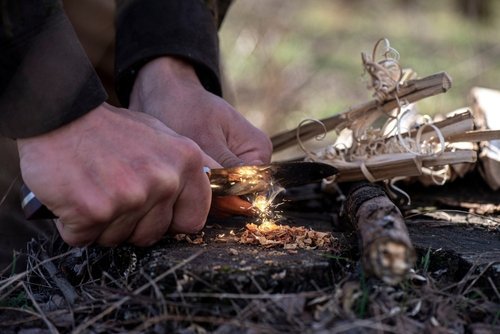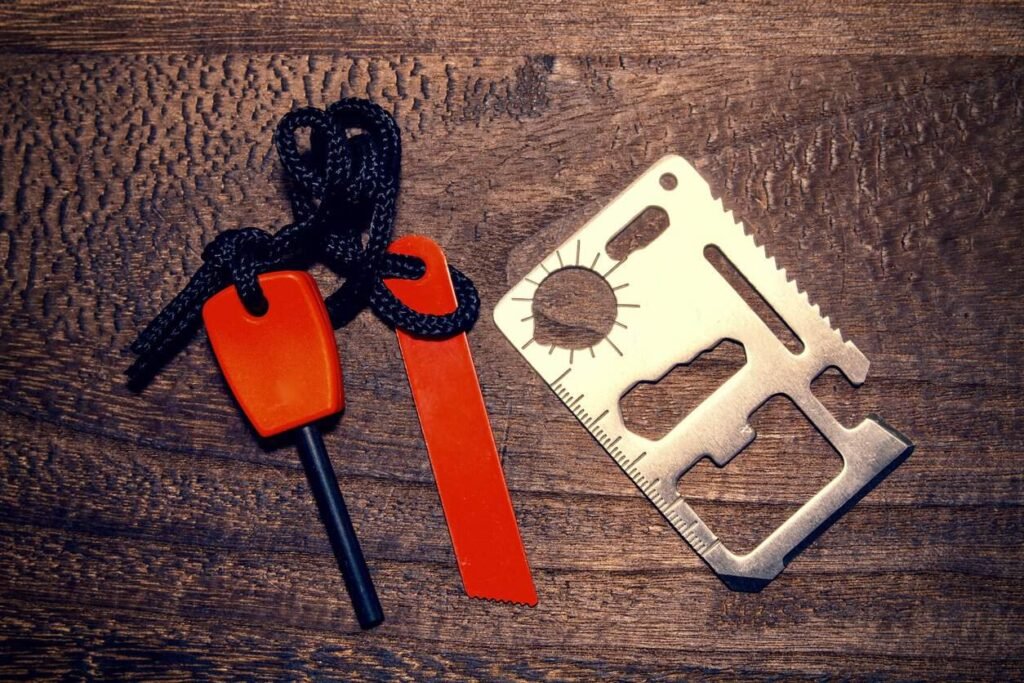
In the realm of outdoor survival, few tools hold as much importance as the ability to start a fire. While matches and lighters are convenient, they’re not always reliable, especially in harsh conditions. Enter the ferro rod, a fire-starting tool that promises sparks even when wet or windy. But how do you use a ferro rod effectively? Let’s dive into this essential tool.
A ferro rod, often called a ferrocerium rod, is a man-made metallic material that, when struck against a rough surface or a sharp edge, produces hot sparks even under wet conditions. To use a ferro rod, you scrape it vigorously with a striker or the back of a knife, directing the sparks onto your tinder to ignite a fire.
Getting to Know the Ferro Rod
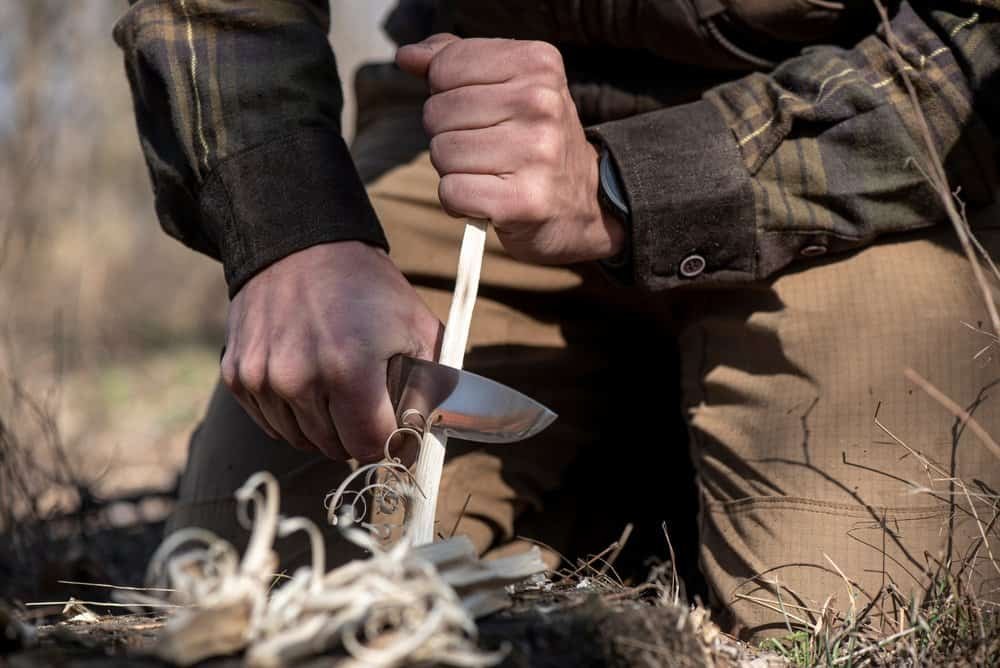
Understanding the Composition
Ferrocerium, the primary material in ferro rods, is a synthetic alloy that produces sparks when struck by a hard surface. Its ability to work even in wet conditions is what has endeared it to outdoor enthusiasts across the globe.
You might find this video by SurvivalistPrepper quite informative, where he delves into the science behind the ferro rod.
Picking the Right Ferro Rod
Size matters! While smaller rods are portable, larger ones tend to last longer and produce bigger sparks. The diameter can range from 3mm to 20mm, with the length varying as well. It’s essential to choose based on your specific needs.
Strikers Matter
While the back of a knife can be used, specialized strikers often produce better results. They’re designed to shave off tiny particles from the rod, which then ignite due to the friction. The type of striker can significantly influence the number and size of sparks produced.
Check out this video by Black Owl Outdoors for a demonstration on how different strikers can affect your fire-starting experience.
Safety First
Always remember to use your ferro rod in a safe environment. Clear the area of flammable materials and always strike away from the body. Safety should always be your primary concern.
This Beginner’s Guide to Using a Ferro Rod further expands on the importance of safety and offers some insightful tips and tricks.
Remember, mastering the ferro rod takes practice. With time and patience, you’ll find yourself starting fires with ease, regardless of the conditions you’re in.
Using the Ferro Rod Efficiently
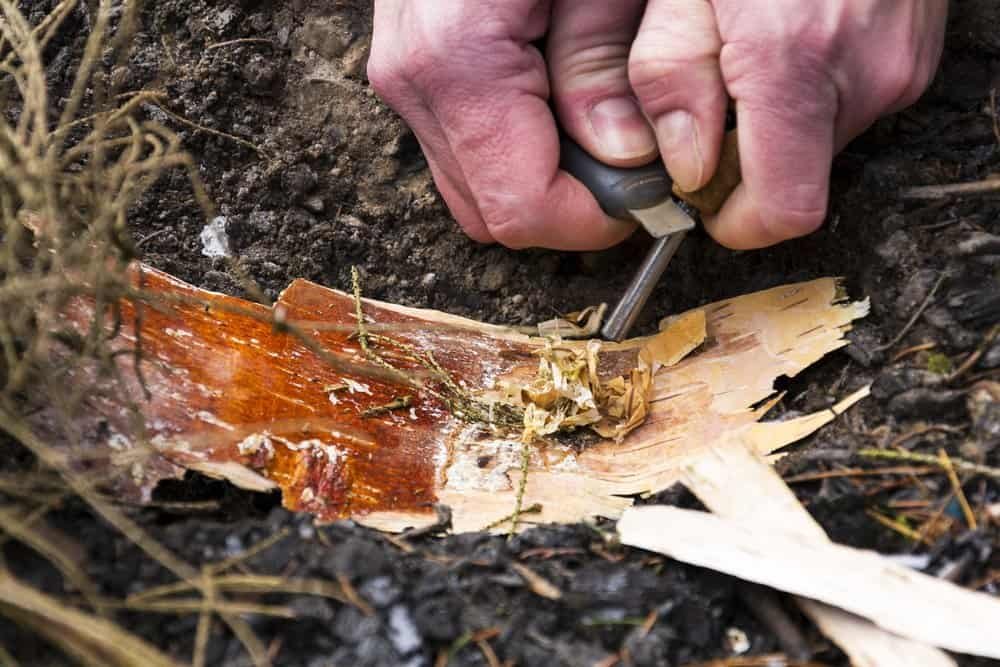
Using a ferro rod might seem straightforward, but mastering its technique can be the difference between lighting a fire in a single strike and endlessly scraping away with no success. Here, we’ll break down the steps and offer insights for you to become a ferro rod pro.
Preparing Your Tinder
Before you even strike the rod, it’s crucial to have the right tinder. Dry grass, birch bark, cotton balls, or even dryer lint can serve as effective tinder. The key is to ensure it’s dry and finely shredded to catch a spark effectively.
For those looking to delve deeper into choosing the perfect tinder, SurvivalCache has a great article detailing various natural and man-made tinder sources.
Holding the Rod and Striker
Hold the ferro rod close to the tinder and grip the striker in your dominant hand. Your grip should be firm, but not overly tight, ensuring control and precision.
Angle and Pressure
The angle at which you strike is pivotal. Aim for a 45-degree angle for optimal spark production. Ensure you’re applying consistent pressure throughout the strike; too soft and you won’t produce enough sparks, too hard and you may end up throwing your tinder everywhere.
For a visual representation of the perfect technique, Bushcraft Heroes offers an excellent video tutorial.
The Striking Technique
Instead of moving the striker down the rod, try holding the striker stationary and pulling the rod back towards you. This minimizes the chance of your striker hitting the tinder and scattering it.
Persistence and Patience
If your first strike doesn’t result in a fire, don’t get disheartened. It’s all about refining your technique and understanding how much pressure to apply. Each environment will present its own challenges, from wet conditions to high altitudes, so adaptability is key.
For an in-depth discussion on various techniques, Preparedness Advice offers a comprehensive breakdown.
Caring for Your Ferro Rod
After use, especially in wet conditions, ensure you dry your ferro rod. While they are resistant to rust, prolonged exposure can reduce their efficiency. A light sanding with fine-grit sandpaper can also restore a rod that’s lost its edge due to repeated use.
Advanced Techniques and Safety Precautions with Ferro Rods
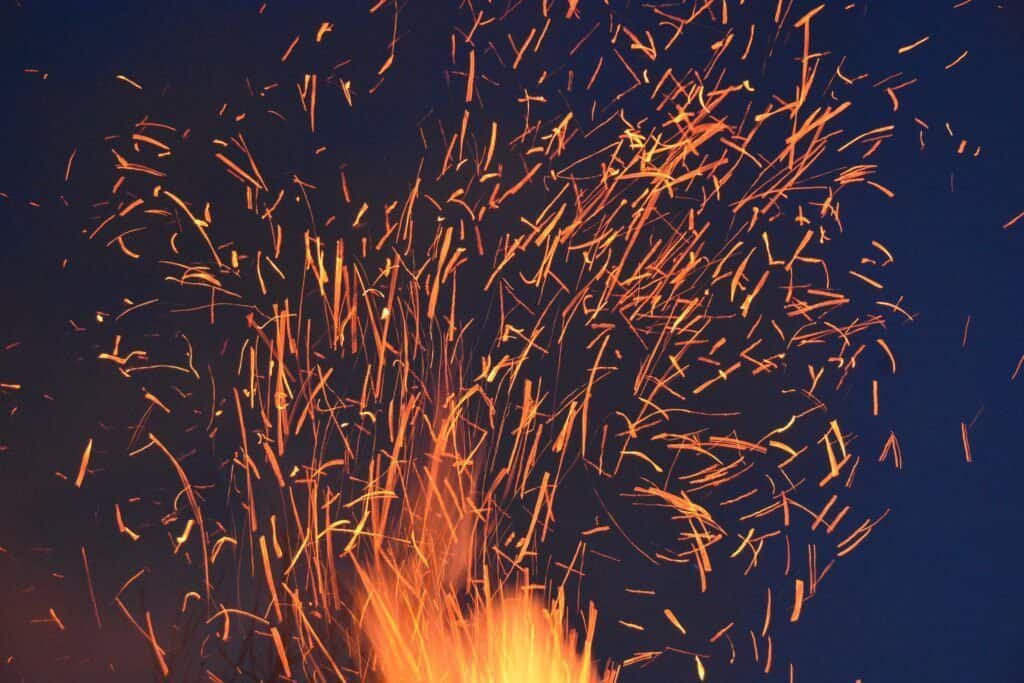
Different Striking Methods
- The Slow Scrape: Instead of striking quickly, apply slow and steady pressure down the length of the rod. This method heats the shavings gradually, accumulating them at the end of the rod, and then ignites them in a concentrated spark.
- The Shower Strike: Using the edge of the striker, create a fast and aggressive strike, sending a shower of sparks onto the tinder. This technique is ideal for lighting harder-to-ignite tinder.
For a deeper dive into these techniques, check out Black Owl Outdoors, which offers a practical demonstration.
Using Different Sides of the Striker
Many ferro rod kits come with multi-sided strikers. Each side, whether serrated, flat, or edged, offers different spark production levels. Experiment with each side to see which produces the best spark for your technique and the tinder you’re using.
Environmental Adaptability
Learning to adapt to different environments is crucial:
- Windy Conditions: Create a wind barrier using your body or other natural formations. Place the tinder in a position where it’s shielded yet can still catch the sparks effectively.
- Wet Conditions: Ensure your tinder is as dry as possible. Using resin-rich woods or carrying a small waterproof tinder kit can be life-saving. For more tips on lighting fires in the rain, Survival Sherpa provides insightful advice
Safety Precautions
- Safe Striking: Always ensure the area around your tinder is clear. When striking, ensure no one is close enough to get hit by a stray spark.
- Fire Safety: Always have a method to extinguish the fire close by, be it water or sand. Ensure you are not starting fires in areas with fire bans or during extremely dry conditions.
- Handling: Ferro rods, when struck, produce extremely hot sparks. Ensure you’re not aiming towards flammable materials or clothing.
For a comprehensive guide on fire safety in the wild, Smoky Bear’s Wildfire Prevention provides a range of resources and advice.
Storage and Maintenance
After each use, store your ferro rod in a dry place. If it gets wet, wipe it down and let it air dry. For rods that have a protective coating, it may need to be scraped off before the first use. Regularly inspect your rod and striker for signs of wear and replace them as needed.
In essence, while the basics of using a ferro rod are easy to grasp, mastering the advanced techniques and understanding the safety protocols ensures you’re prepared for any situation. Whether you’re a casual camper or a seasoned survivalist, these skills are invaluable.
FAQ
- Q1: Can a ferro rod work when it’s wet?
A: Yes, one of the main advantages of ferro rods is their ability to produce sparks even when wet. However, it’s essential to ensure that the tinder and kindling are dry for a successful fire. - Q2: How long does a typical ferro rod last?
A: Depending on its size and usage frequency, a ferro rod can last for thousands of strikes. It’s always a good idea to have a backup, especially on extended trips or in survival scenarios. - Q3: Can I use a knife as a striker?
A: Absolutely! The back (spine) of a high-carbon steel knife is an excellent striker for ferro rods. However, avoid using the blade as it can dull it and reduce its effectiveness. - Q4: Is there a difference between a ferro rod and a flint striker?
A: Yes, while they both produce sparks to start fires, they’re made from different materials. Flint is a form of quartz, while ferro rods are typically made from a mix of iron (ferro) and other metals. - Q5: Why isn’t my ferro rod producing sparks?
A: Some ferro rods come with a protective black coating. Before using them, this coating should be scraped off to expose the shiny metal beneath. Once exposed, the rod should produce sparks when struck. - Q6: Are there any materials that work best as tinder for ferro rods?
A: Cotton balls soaked in petroleum jelly, dry grass, birch bark, and commercial fire starters work exceptionally well with ferro rod sparks. The key is to ensure the material can catch a spark easily and sustain a flame. - Q7: Can a ferro rod break or shatter?
A: While they’re designed to be durable, ferro rods can break if dropped from a significant height or subjected to other strong forces. However, even a broken piece can still produce sparks and be used to start fires. - Q8: Is it safe for children to use ferro rods?
A: Supervision is crucial. While ferro rods can be a great way to teach children about fire safety and basic survival skills, always ensure they’re used under adult supervision to prevent accidents. - Q9: Can I fly with a ferro rod in my carry-on luggage?
A: Generally, ferro rods are allowed in both checked and carry-on luggage. However, always check with your airline and current TSA guidelines to ensure there are no restrictions. - Q10: Does the length or diameter of the ferro rod make a difference?
A: Yes, larger rods tend to produce more substantial sparks and last longer. However, they’re also heavier. It’s essential to find a balance between size and portability based on your needs.
Conclusion
A ferro rod is an invaluable tool for any outdoor enthusiast, ensuring you have a reliable fire-starting method no matter the circumstances. With practice, it can become your go-to method for igniting fires in the wilderness. If you’re keen on exploring more about survival and bushcraft products, visit our comprehensive guide here.

